Nigerian Food Dishes: Basic Overview
Common Ingredients
Common Cooking Methods
Courses
Meals
Key Taste
Eating Etiquette
Meal Presentation
Culinary Festivals
Influence and Fusion
Popular Types of Nigerian Dishes
-
Rice Dishes
Nigerian rice dishes usually have a neutral flavor and are popular side dishes for savorier specialties.
These dishes can be made with whole rice kernels or a rice-based dough.
-
Soups and Stews
Soups and stews make up a significant proportion of Nigerian dishes.
These food offerings are hearty and savory items for the main course.
These dishes are typically prepared with vegetables, legumes, meat, palm oil, and spices.
Vegetarian stews based on vegetables are also popular.
-
Snacks
Snacks in Nigeria include many types of dishes.
Popular categories include cakes and pastries, dumplings, grilled and barbecued dishes, salads, and dumplings.
These dishes can be sweet or savory, depending on the main ingredients.
Nigerian snacks are also great appetizers and street food dishes.
Nigerian dishes are specialties closely associated with Nigeria, a country in West Africa. Home to hundreds of ethnic groups, Nigeria has a diverse indigenous cooking tradition that has been further improved by interactions with many other cuisines.
Many dishes in Nigeria are also similar to West African and Central African dishes, such as Beninese specialties and Cameroonian specialties.
Staple ingredients in Nigerian cuisine include plantains, various types of tubers, corn, palm oil, vegetables, and African greens. These ingredients are usually prepared using traditional methods handed down from generation to generation.
I will mention other aspects of traditional Nigerian food before talking about its global popularity and health values.
Then, I will describe the 19 most famous dishes in Nigeria before covering the basics of Nigerian cuisine and recommending beverages for pairing with local dishes.
19 Most Popular Nigerian Dishes with Filters
You’re going to learn about the best 19 dishes in Nigerian cuisine. Don’t forget to use advanced filters for an easier reading experience; there are options regarding alphabetical sorting, main ingredients, taste, cooking methods, dish types, courses, and global popularity.
But they aren’t the only options: there are also filters based on specific culinary styles, such as traditional, national, and street food options.
Jollof Rice
- National
- Traditional
Jollof rice, or simply jollof, is an iconic rice dish in Nigeria and many other Western African countries. It was created in the 14th century in the Senegambian region, which was then ruled by the Jolof Empire, hence its name.
Jollof rice consists of rice, tomato paste, protein (such as chicken, fish, or meat), onions, and curry powder. The last ingredient gives the rice a charming orange hue and a deliciously flavorful taste.
Jollof rice is a common dish to serve at celebrations and gatherings. More than a mere dish, this rice specialty is also a symbol of unity between the West African countries.
Tuwo Shinkafa
- National
- Traditional
Tuwo shinkafa is a traditional Nigerian rice-based dish invented by the Hausa tribe who live in the country’s northern region. It is typically served warm as a versatile side with heavily seasoned soups and stews.
People prepare tuwo shinkafa by cooking the rice or corn in water, using a long-handled wooden spoon to mash it into a dough-like mixture, then shaping the dough into balls. The neutral taste of this staple dish allows savory specialties to shine.
Egusi
- National
- Traditional
Egusi, literally “melon,” is a famous Nigerian soup thickened by the ground seeds of melons, gourds, or squash. It was created by the Yoruba people, though some alternative theories posit that it actually belongs to the Igbo people.
Besides its namesake ingredient, egusi includes meat or fish, palm oil, and various vegetables, such as spinach, pumpkin leaves, tomatoes, and onions. This thick, hearty, and flavorful soup is a common sight at many celebrations and festivals.
Eba
- Traditional
Eba is a well-known Nigerian comfort food created by the Yoruba people. Its main ingredient is garri, a type of flour made from dried grated cassava.
To make eba, garri is mixed with hot water and stirred until it becomes a firm, doughy consistency. Then, people shape the mixture into balls and eat them with their fingers as a side dish with soups and stews.
The texture of eba varies from soft and fluffy to firm, depending on the amount of water used in its preparation. Sometimes, locals add palm oil when drying the grated cassava to give eba a yellow hue.
Moin Moin
- Traditional
Moin moin, also known as moi moi, is a well-known Nigerian staple dish or snack, especially in the western region. It is a thick and creamy paste made from black-eyed beans, onion, and ground red peppers.
Depending on the preference of the cook, moin moin comes in a pyramid or cylindrical shape. Besides the traditional 3-ingredient version, people sometimes prepare moin moin with extra components, such as minced meat, hard-boiled egg slices, lobsters, butter, and carrots.
Fufu
- Traditional
Fufu, also known as foufou, is a dough-like staple dish in Nigeria, as well as throughout West Africa. Locals prepare it by fermenting cassava, boiling it, pounding it, and repeating the process until the mixture becomes a smooth, sticky, and stretchy paste.
In Nigeria, ball-shaped fufu is a preferred side dish for numerous soups, especially egusi soups. Its bland yet slightly sweet and nutty taste is a match made in heaven for savory dishes.
Ogbono Soup
- Traditional
Ogbono soup is a common Nigerian dish hailing from the southeastern region, namely Igboland. It was named after its main ingredient, ogbono seeds, which are the edible, nutty seeds of the ogbono tree (also known as bush mango or wilde mango).
Ogbono soup also contains bitter leaves, celosia (woolflowers), tomatoes, okra, meat or fish, and seasonings. These ingredients give ogbono soup a uniquely savory, nutty flavor and a thick texture that is ideal for dipping with fufu or pounded yam.
Asaro
- Traditional
Asaro, or yam porridge, is a hearty Nigerian dish originating in the cuisine of the Yoruba people. It consists of yam, tomatoes, onions, bell peppers, and palm oil.
While many Nigerian dishes contain meat, creamy asaro is a completely vegan dish that is packed with nutrients and is perfect for a fulfilling lunch or dinner.
Banga Soup
- Traditional
Banga soup, also known as Banga stew or ofe akwu, is a beloved dish in Nigeria. It was invented by the Urhobo tribe, who reside in the Delta state.
“Ofe” refers to soups or stew while “akwu” means palm fruit, highlighting the dish’s main ingredient. Ofe akwu is prepared with various types of meat or fish, palm fruit extract, and local spices.
This palm nut soup goes well with rice and fufu for both daily and festive meals.
Abacha
- Street Food
- Traditional
Abacha is a refreshing Nigerian cassava-based salad widely enjoyed in the country. It is native to the Igbo tribe, who live in Eastern Nigeria.
The preparation of abacha involves drying and shredding cassava, seasoning it with calabash nutmeg and other species, and topping the mixture with fried meat or fish. Locals often enjoy this salad with ugba (African oil bean seeds) as a street food or snack.
Ewa Aganyin
- Street Food
- Traditional
Ewa aganyin, also known as ewa agoyin, is a Nigerian dish with roots in the cooking traditions of the Agoyin people in Cotonou, Benin. “Ewa” is the Yoruba word for “beans,” while “agoyin” refers to the Togolese and Beninese people.
Ewa aganyin is made by mashing boiled beans, specifically black-eyed peas or honey beans, with a spicy sauce made from chili peppers, bell peppers, onions, and palm oil. This process creates a simple yet filling street food or snack.
Suya
- Street Food
- Traditional
Suya is a well-liked Nigerian street food in the form of spicy meat skewers. It is a specialty of the Hausa people in Nigeria’s northern region, which is also the best place to find it.
Locals make suya with chicken, beef, or ram. They season the meat with salt, paprika, ground peanuts, and chili pepper, creating a savory and spicy flavor profile.
Freshly grilled suya is wrapped in newspaper sheets or foil and served with fresh vegetables, such as onions, tomatoes, and cabbage.
Puff-puff
- Traditional
Puff-puff is a traditional African snack widely enjoyed in Nigeria. It consists of deep-fried dough balls that are made from a yeast-based mixture of flour, sugar, and water.
Puff-puff balls are often dusted with powdered sugar and can be flavored with aromatics like nutmeg or vanilla. Their exterior is crispy, while the inside remains soft and airy, similar to a doughnut.
Little is known about the history of puff-puff, as the only certain fact is that it came from Sub-Saharan Africa. Outside Nigeria, puff-puff is also a beloved snack in many African countries.
Boli
- Street Food
- Traditional
Boli, or roasted plantains, is a popular snack and side dish in Nigerian cuisine. Both green plantains and ripe plantains are suitable for making this dish, creating different levels of sweetness.
Boli hailed from Yoruba cuisine, in which locals usually refer to the dish as bole. Dodo Ikire (Fried Plantain). Roasted plantains go well with peanut sauce, hot sauce, and even grilled meat or seafood.
Besides boli, dodo ikire is another Nigerian plantain-based snack and side dish worth trying. This dish is prepared by frying ripe plantains in palm oil.
Chin Chin
- Traditional
Chin chin is a festive Nigerian snack that is typically served at Christmas and weddings. Locals often say that there is no wedding in Nigeria without chin chin.
Chin chin comes in the form of crunchy fried dough made from wheat flour and other baking ingredients. The dough can be formed into various shapes of varying textures, ranging from hard to soft.
This festive snack is widely available year-round at supermarkets and street food stalls.
Àkàrà
- Street Food
- Traditional
Àkàrà, also known as kosai, is a famous street food and breakfast dish in Nigeria. Legend has it that Yoruba people historically often served àkàrà to the soldiers who had just won a war.
In addition, àkàrà was also a staple dish served at the burial ceremonies of people who were over 70 years old, but this tradition has become outdated.
The main ingredient of àkàrà is black-eyed peas, which are peeled, mashed, seasoned, and deep-fried in palm oil or vegetable oil. These crispy-outside, tender-inside balls are often accompanied by a spicy dipping sauce.
Interestingly, savory àkàrà is the inspiration behind the famous Brazilian dish acarajé.
Kilishi
- Traditional
Kilishi is a Nigerian version of jerky created by the Hausa people in the state of Bauchi in the country’s northern region.
Locals prepare kilishi by deboning meat from sheep, goats, or cows, then slicing it thinly, immersing the meat in a spicy peanut-based paste, and drying the meat in the sun.
Kilishi began as a method to preserve meat for extended periods, particularly for journeys across the Sahara. Today, this dried meat specialty is a beloved breakfast dish or snack to serve with starchy food or jollof rice.
Masa
- Traditional
Masa, also known as waina, is a sought-after Nigerian fermented rice cake from the northern part of the country. It was created by the Hausa tribe and is usually associated with the city of Bauchi.
Locals prepare masa by soaking and grinding rice into a smooth dough, letting it ferment, and cooking it in a special clay or metal mold. This process creates soft, spongy rice cakes with a mildly tangy taste.
Masa is an inexpensive side dish to serve with soups, stews, or simply sugar and honey. The texture is soft and spongy, with a mild, slightly tangy taste, often served with soups, stews, dambun nama (chicken floss), or sugar and honey as a sweet version.
Efo Riro
- Traditional
Efo riro is a rich, flavorful Nigerian stew from the Yoruba people. “Efo” and “riro” mean “green leafy vegetable” and “to stir,” respectively.
Nigerians mostly prepare efo riro with a considerable number of leafy vegetables, such as efo shoko (Lagos spinach) and efo tete (African spinach). These ingredients are cooked with tomatoes, onions, bell peppers, and palm oil.
Sometimes, fish or meat is added to efo riro, creating a filling dish to serve with starchy dishes, like fufu and eba.
You have learned so much about specific Nigerian dishes, but how about the general cuisine? I will cover this topic in the next section.
What Are the General Features of Nigerian Cuisine?
The key aspects below are vital to comprehending the vast culinary landscape of Nigeria.
Nigeria is home to between 250 and 300 ethnic groups, each with its unique culinary traditions. The three largest groups, the Hausa in the north, the Yoruba in the southwest, and the Igbo in the southeast, play a decisive role in shaping the national cuisine.
Nigerian cuisine shares similarities with the cuisines of neighboring West African and Central Asia countries, such as Ghana, Senegal, Benin, and Cameroon.
Through trade as well as historical and cultural interactions, Middle Eastern, North African, and European cooking traditions are also notable influences. British cuisine is particularly influential.
From the coastal regions to the savannah zones, the availability of food ingredients changes from place to place in Nigeria.
For instance, the coastal areas have abundant seafood, while the northern regions are more reliant on grains and meat from pastoralism.
Nigeria’s fertile land supports a variety of staple crops, such as yams, cassava, grains (like rice, corn, and millet), beans, plantains, and various fruits and vegetables.
Dietary laws and practices dictated by religions influence Nigerian cuisine in several aspects.
In the predominantly Muslim north, halal dietary laws influence cuisine, while the Christian and traditional African religious practices in the south and east have their own dietary customs.
Continue reading to discover the best food and drink pairings you should try in Nigeria.
What Are the Best Beverages to Accompany Nigerian Dishes?
Understanding how to pair Nigerian dishes with the four following types of beverages will help you better appreciate local cuisine.
Kunun Zaki
Kunun zaki is a non-alcoholic millet-based beverage. Its sweet and tangy taste pairs beautifully with spicy and hearty dishes, especially suya and ewa aganyin.
Zobo
Zobo is the Nigerian version of hibiscus tea, which boasts a sweet, tart, and fruity taste. This beverage is an excellent match for light dishes like moin moin and puff-puff.
Palm Wine
Palm wine offers a mix of sourness and milky sweetness, depending on how long it is fermented, so this alcoholic beverage should go with rich and flavorful dishes like egusi soup, kilishi, and efo riro.
Chapman
Chapman is a mixed beverage made with fizzy drinks, fruits, and sometimes alcohol. With a sweet and tangy flavor profile, it goes well with various dishes, such as boli, suya, and àkàrà.
Tell me what you think about my Nigerian food recommendations in the comment section. I’d also love to hear your perspective on local specialties! Share this list of Nigerian dishes with your friends, and check out other guides on cuisines around the world!












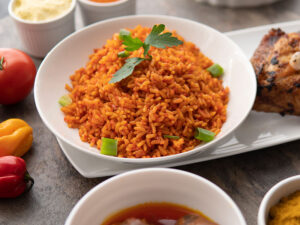
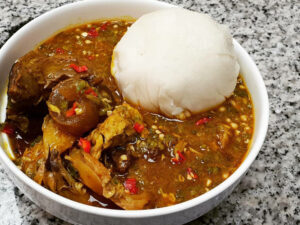
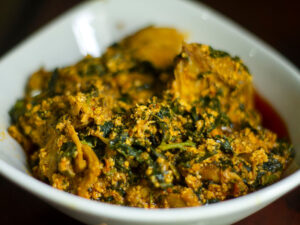
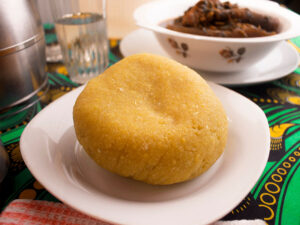
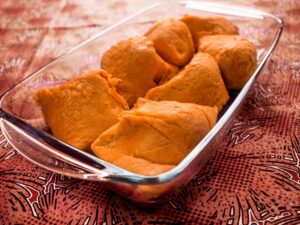
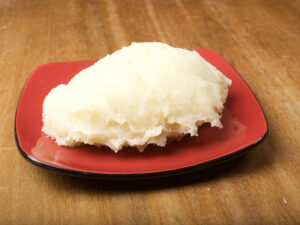
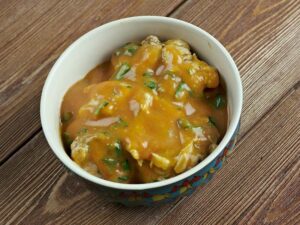
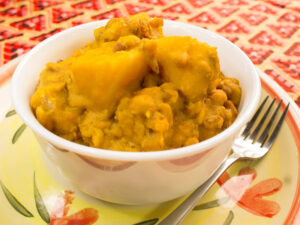
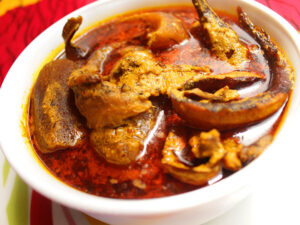
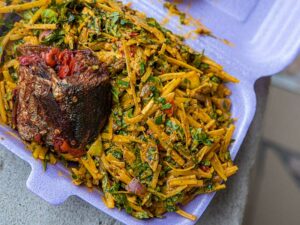
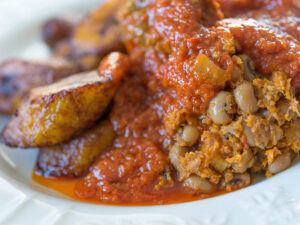
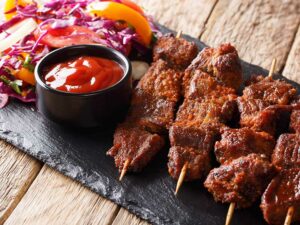
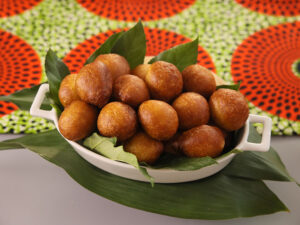
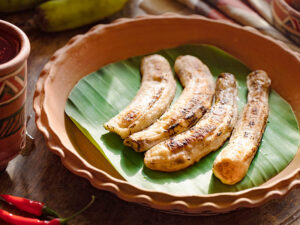

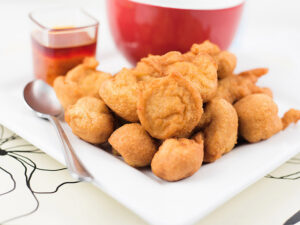

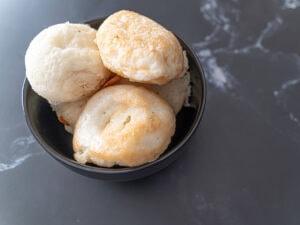
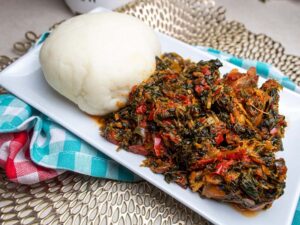

Jamie Scott
Editor in Chief, Senior Content Writer
Expertise
Home Cooking, Meal Planning, Recipe Development, Baking and Pastry, Food Editor, Cooking-video Maker, Western Food Evaluation Expert
Education
Le Cordon Bleu College of Culinary Arts
Local Community College, New York, NY
Jamie Scott is a skilled culinary expert and content creator specializing in Western cuisine. With over 15 years in the culinary field and formal training from Le Cordon Bleu, Paris, Jamie deeply understands how to blend nutrition with delicious flavors. His passion for cooking matches his commitment to making healthy eating accessible and enjoyable.
On Fifteen.net, Jamie brings a fresh perspective to classic dishes and beverages, offering readers insightful recipes, cooking tips, and a fresh view on meal planning that emphasizes taste, health, and simplicity.